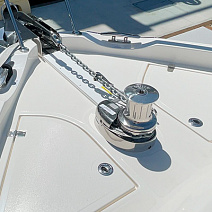
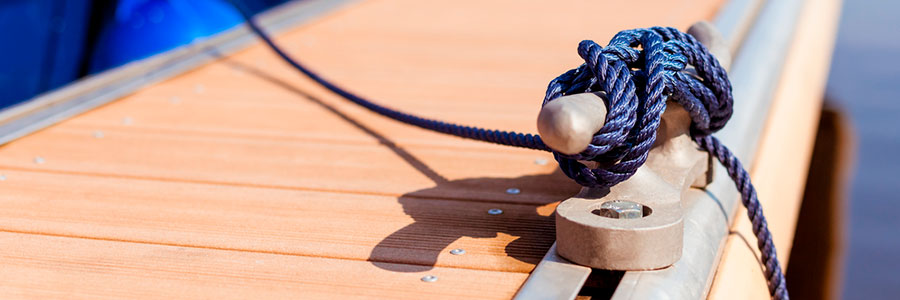
The Role of Chocks in Effective Mooring
When it comes to securing a vessel, whether at a bustling marina or a secluded anchorage, the importance of chocks often goes unrecognized. Yet, these pivotal devices play a crucial role in enhancing mooring safety and efficiency. Chocks guide mooring lines from the vessel to the dock or mooring point, mitigating wear on both the lines and the vessel's structure, and ensuring a secure connection in various maritime conditions.
Understanding Chocks
Chocks are sturdy fixtures, typically made of metal, plastic, or wood, affixed to the deck of a boat or on a dock. They are designed to guide mooring lines in a manner that prevents direct contact between the line and the vessel’s hull or railings, thereby reducing abrasion and prolonging the life of the mooring lines.
Types of Chocks and Their Applications
- Straight Chocks: The most straightforward design, ideal for directing lines from the vessel to a securing point without requiring sharp turns.
- Roller Chocks: Incorporate rollers to reduce friction and facilitate smoother movement of mooring lines, especially under heavy loads or when the line’s direction needs adjustment.
- Closed Chocks: Encircle the mooring line completely, offering enhanced security by preventing the line from slipping out, ideal for rough weather conditions or when leaving a boat unattended for longer durations.
- Open Chocks: Allow for quick and easy placement and removal of mooring lines, suitable for short-term mooring or where rapid changes to mooring configurations are common.
The Significance of Proper Chock Usage
The strategic placement and use of chocks can significantly impact mooring safety and efficiency. By ensuring lines are led away from sharp edges and potential snag points, chocks help maintain the integrity of mooring lines and the vessel itself. Moreover, correctly positioned chocks facilitate optimal line angles, reducing undue stress and preventing slippage.
Best Practices for Chock Use
- Choosing the Right Chock: Select chocks that suit the size and material of your mooring lines and match the specific mooring conditions you expect to encounter.
- Proper Installation: Ensure chocks are securely mounted to the deck or dock, capable of withstanding the forces exerted by mooring lines under load.
- Regular Inspection: Just as with cleats and lines, chocks should be regularly inspected for signs of wear, corrosion, or damage, and maintained or replaced as necessary.
- Correct Line Placement: Make sure lines are correctly placed within chocks to prevent chafing and ensure the line runs smoothly. Pay particular attention to the angle at which lines enter and exit chocks to optimize their effectiveness.
Chocks may seem like simple hardware, but their role in the safe and efficient mooring of vessels cannot be overstated. By guiding mooring lines effectively, they prevent damage to both lines and the vessel, contributing to overall maritime safety. Understanding the types of chocks available, their appropriate use, and best practices for their maintenance is essential knowledge for any boater.
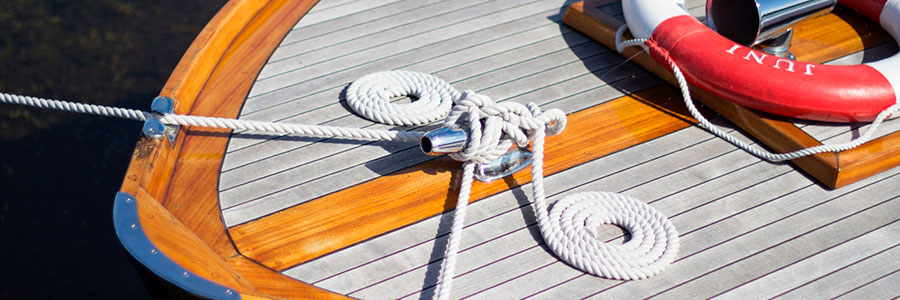
Mooring to a Dock Cleat: Techniques for Secure Docking
Mooring your boat to a dock cleat is a fundamental skill that combines precision, safety, and an understanding of maritime conditions. Dock cleats, typically horn-shaped and made from durable materials, serve as anchor points for mooring lines on docks and marinas. Here’s how to securely tie your boat to a dock cleat, ensuring it stays put regardless of conditions.
1. Assessing Conditions and Planning Your Approach
Before you even approach the dock, assess wind direction, currents, and potential tidal changes. This assessment will inform how you position your boat relative to the dock and which lines you'll secure first. Your approach should allow you to maintain control of the boat while positioning it close enough to the dock for easy line handling.
2. Initial Contact: The Role of Spring Lines
Spring lines play a crucial role in controlling your boat's movement as you moor. Upon nearing the dock, your first move should be to secure a spring line, which runs from the midship cleat to a dock cleat angled towards the stern or bow, depending on your approach.
3. Securing Bow and Stern Lines
Once the spring line is in place, proceed to secure the bow line from the boat's forward cleat to a dock cleat positioned ahead of the boat. Follow this by attaching the stern line from the stern cleat to a dock cleat located behind the boat. This configuration restricts the boat's movement along the dock, keeping it parallel and close to the dock.
4. Adjusting Lines for Tidal Changes
In areas with significant tidal movement, it's essential to adjust the length of your mooring lines to accommodate water level changes.
5. The Cleat Hitch: Securing Your Line
The cleat hitch is the preferred knot for securing lines to dock cleats due to its balance of security and ease of untying. To tie a cleat hitch:
- Wrap the line around the base of the cleat once.
- Cross over the top and form a figure-eight around the cleat’s horns.
- On the last cross, form a half-hitch by looping the line under itself and pull tight.
This knot ensures the line is secured to the cleat, preventing slippage under load while allowing quick release when needed.
6. Regular Inspection and Adjustment
After mooring, periodically inspect your lines for wear, chafing, or loosening, especially if you plan to leave your boat docked for an extended period. Adjust lines as needed to account for changing conditions like wind shifts or water levels.
Mooring to a dock cleat, when done correctly, ensures your boat remains safely secured, protecting both your vessel and those around it. By understanding the conditions, using spring lines for initial stabilization, securing bow and stern lines appropriately, and mastering the cleat hitch, you can moor your boat with confidence. Regular inspection and adjustment of your lines further ensure that your boat stays safe and secure, allowing you to enjoy your time on the water with peace of mind.
When tying up at the dock, it’s crucial to ensure that the end of the dock line is properly tied to the cleat on the dock. Start by bringing the line to the dock and looping it around the boat cleat, securing it with a bowline or similar knot. Make sure the lines are tied to the cleats on either side of the dock to prevent your boat from moving away from the dock. The side of the cleat should be used to tie the lines tightly, ensuring the boat remains parallel to the dock. Learn how to tie the proper knots and make adjustments to the lines as needed to accommodate changes in water levels or wind conditions. By using sturdy dock cleats and tying the boat correctly, boat enthusiasts can ensure their vessel is safely moored, whether at a stationary dock or when tying up alongside another boat.
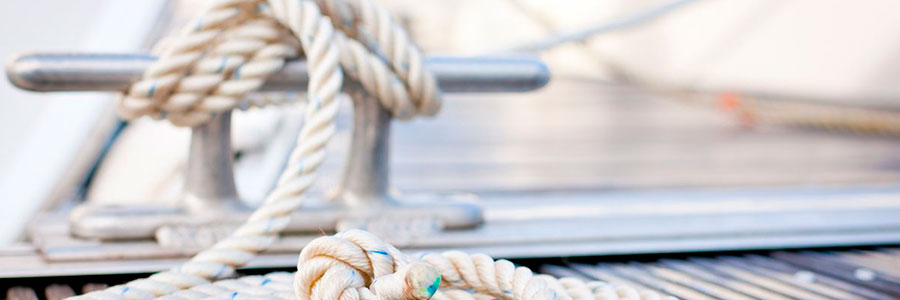
Mooring in a Slip: A Step-by-Step Guide
Mooring your boat in a slip, akin to parking a car in a garage, requires a blend of careful maneuvering and strategic line placement. A slip provides your boat with a designated space, often flanked by docks or pilings on either side, offering protection from passing vessels and buffering against strong currents and winds.
1. Preparing for Entry
Before entering the slip, assess the direction and strength of the wind and current, and consider how they will affect your approach. Ensure all mooring lines and fenders are prepped and accessible, with fenders positioned on both sides of the boat to prevent hull damage.
2. The Approach
Approach the slip at a slow, controlled speed. If you're backing in, align your boat with the slip entrance and gently reverse. For a bow-in approach, move slowly forward. In both cases, the goal is to keep the boat aligned with the center of the slip, adjusting throttle and steering to counteract wind and current.
3. Securing Stern Lines
Once your boat is positioned within the slip:
- Attach a line to each stern cleat on the boat.
- Cross these lines to opposite sides of the slip, securing them to dock cleats or pilings. This prevents the boat from moving forward or backward and stabilizes the stern.
4. Securing Bow Lines
After the stern is secured:
- Attach a line to each bow cleat.
- Extend these lines forward to dock cleats or pilings on either side of the slip entrance.
- This configuration holds the boat steady within the slip and allows for slight movement to accommodate water level changes, particularly important in tidal areas.
5. Adjusting Lines for Tidal Variation
In regions with significant tidal movement, it's crucial to adjust the slack on your mooring lines:
- Lines should be tight enough to keep the boat centered in the slip but allow enough give for the boat to rise and fall with the tide.
- Regularly check and adjust the tension to ensure the boat remains securely moored without putting undue stress on lines or cleats.
6. Use of Spring Lines
Spring lines can be especially useful in a slip for additional security:
- Attach spring lines diagonally from the bow and stern to the opposite dock or piling.
- This arrangement aids in keeping the boat centered in the slip and reduces motion due to wind or current.
7. Final Checks and Adjustments
With all lines secured, conduct a final inspection to ensure:
- Lines are not overly tight, causing stress on cleats or hull.
- There is no excessive slack that could allow the boat to drift within the slip or come into contact with the dock or other boats.
- Fenders are appropriately positioned to protect the boat's sides from the dock or pilings.
Mooring in a slip, while seemingly daunting, becomes second nature with practice. By methodically securing your boat using stern, bow, and optionally, spring lines, and by making necessary adjustments for environmental conditions, you can ensure your vessel remains safe, secure, and ready for your next outing
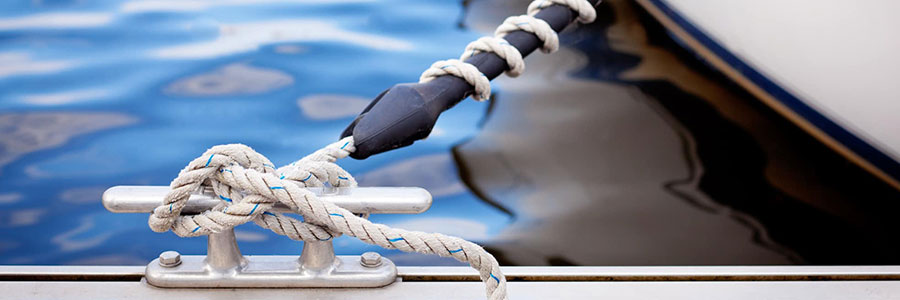
Choosing and Using Cleats: Ensuring a Secure Mooring
Cleats are the unsung heroes of the maritime world, playing a pivotal role in securing vessels safely to docks, slips, or alongside other boats.
1. Understanding the Types of Cleats
Cleats come in various designs, each serving specific purposes. Your choice depends on your boat’s size, the type of mooring, and personal preferences.
- Horn Cleats: The traditional design, ideal for various mooring tasks. Their simple yet effective structure makes them suitable for almost any line-securing job on board.
- Cam Cleats: Utilize a spring-loaded cam mechanism to clamp the line securely. They are excellent for quick adjustments, making them popular for sail control lines.
- Clam Cleats: Similar to cam cleats, they secure the line between two fluted pieces. These are commonly used for lighter loads and quick releases.
- Pop-Up and Pull-Up Cleats: These cleats offer a sleek design by retracting into the deck when not in use, reducing the risk of tripping or snagging lines.
2. Material Matters
The choice of material for cleats significantly affects their durability and suitability for your boating environment.
- Stainless Steel: Offers excellent corrosion resistance and strength, ideal for saltwater environments.
- Galvanized Steel: A cost-effective option with good durability, suitable for less corrosive environments.
- Aluminum: Lightweight and corrosion-resistant, perfect for freshwater use.
- Nylon: Offers great resistance to corrosion and is lightweight, making it suitable for small boats and light-duty applications.
3. Choosing the Right Size
The size of the cleat should be proportional to the size of the boat and the diameter of the lines used. A general rule is that the cleat's length should be 1 inch for every 1/16 inch of the line’s diameter. This ensures that the cleat can handle the line securely without slipping.
4. Proper Placement on Your Boat
Placement is critical for maximizing the effectiveness of cleats:
- Bow and Stern Cleats: For securing the boat’s front and back to the dock or mooring.
- Spring Cleats: Located midship, these are used for lines that control fore-and-aft movement along the dock.
- Additional Cleats: Depending on your boat’s size, additional cleats can be added for specific uses, like fender lines or secondary mooring lines.
5. Using Cleats Effectively
Securing your boat properly involves more than just tying a knot:
- Cleat Hitch: The most common and secure knot for mooring. It involves wrapping the line around the base of the cleat, then making a figure-eight around its horns, and locking the line with a final half-hitch.
- Regular Maintenance: Regularly inspect cleats for signs of wear or corrosion and ensure they’re firmly attached to the deck. Replace any that show signs of weakness.
- Educate Your Crew: Ensure everyone on board knows how to tie a cleat hitch and understands the importance of using cleats correctly for the safety of the vessel and its occupants.
Cleats, though small, play a crucial role in the safety and security of your vessel. Selecting the right type and material, ensuring proper installation and placement, and using them correctly are all vital steps in maintaining a secure mooring.
How to Tie a Boat to a Dock - Conclusion
Properly tying up your boat to a dock is essential for safety and security. Begin by securing the dock line to the cleat on the bow of your boat, making sure to use a simple cleat knot for a secure hold. Next, bring the line to the dock’s cleats or pilings, ensuring the boat remains parallel to the dock. Use a cleat hitch to secure the line around the cleat, wrapping the line around the horn of the cleat in a figure-eight pattern.
For additional stability, use breast lines to keep your boat from moving away from the dock. These lines should be tied at an angle from the boat to the dock to prevent the boat from drifting. If you're docking at a floating dock, make sure the dock lines allow for movement with the tide. Fenders should be placed on the sides of your boat to protect it from damage when docking.
Lastly, always check the connection between your boat and the dock, adjusting as necessary to maintain a firm, secure tie-up. By following these steps, you can ensure your boat is safely and securely docked, preventing it from moving or falling into the water.
For guidance on proper fender placement, check out our article on How to Attach Boat Fenders to Dock.

